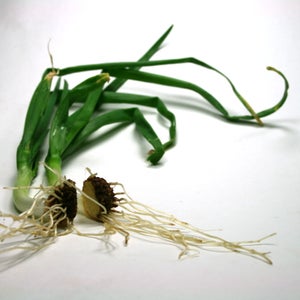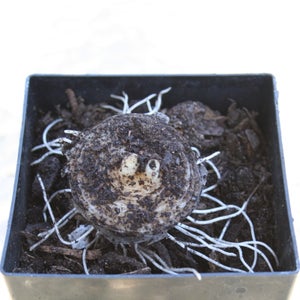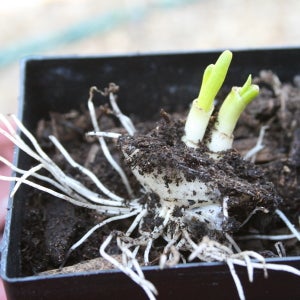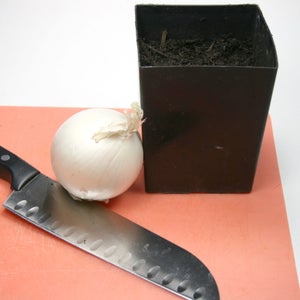Around the world, onions are one of the most useful vegetables. Their strong flavor adds depth and complexity to dishes from a wide range of cuisines. Onion plants are also beautiful to look at, which makes them good subjects for photography. This article will show you how to take interesting pictures of onion plants by learning about their main features and using different photography methods.
Allium cepa is the genus name for onions. Onions are a flowering plant that probably came from Central Asia. Over 120 different kinds of onions are grown around the world. They vary in size, shape, color, and strength of flavor. The most common types are yellow, red, and white onions. Other plants in the Allium family that look like onions and can be eaten are scallions, leeks, garlic, and shallots.
Onions grow as biennial plants, meaning they take two years to complete their lifecycle. In the first year, bulbs form underground as the onion plant produces green, hollow leaves above ground. Given the right conditions, the bulbs remain dormant through winter. In spring of the second year, the bulbs sprout tall, central stalks that produce clusters of small white or pink flowers. Once flowering completes and seeds are produced, the plant dies.
Capturing an Onion’s Distinctive Physical Features
The unique characteristics of onion plants present numerous photographic possibilities. As you compose your shots, consider how to emphasize these striking features:
-
It has long, hollow tubes that can grow up to 3 feet tall. Onion greens come out of the bulb in the first year as these tubes. The round onion bulb below ground looks great next to their tall, vertical shape.
-
Umbel flowers – The second year flowering stalk contains clusters of small flowers called umbels that protrude outward like mini bouquets. The balls of tiny white or pale purple blossoms have an unusual and eye-catching shape.
-
Rings of layers and concentric circles: When you cut an onion in half, you can see that the inside is made up of layers of thin membranes that circle the center. Backlighting thinly sliced sections can showcase these translucent, intricate layers.
-
Vibrant colors – Red and purple onion varieties contain pigments that lend rich, deep colors ranging from crimson red to deep purple. Isolating a whole, vibrant bulb against a contrasting solid backdrop amplifies its saturated hues.
-
Textured, papery skins – As bulbs mature, the outer skin becomes dried and brittle with a fibrous texture that almost resembles parchment paper. Using side lighting or macro shots brings out the coarse details.
Useful Photography Techniques for Onion Plants
To highlight an onion’s most interesting visual elements, consider employing these photographic techniques:
-
Macro shots – Extreme close-ups emphasizing color, texture, and intricate details like the onion’s membranous layers or flowering buds. Can be taken with macro lens or macro setting on standard lens.
-
Backlighting – Placing a light source behind semi-transparent onion sections to create glowing, luminous effects and clearly display internal structure.
-
Side lighting – Illuminating onions from the side to cast shadows that accentuate shape, depth, and textural skin details.
-
High angles – Shooting down on an onion scene to showcase the bulb in the ground with leaves emerging upward.
-
Depth of field – Using wide apertures for shallow depth of field to blur backgrounds and draw focus to a central sharp subject.
-
Selective focus – Similarly, strategically choosing what to sharpen and blur in an onion still life by manually controlling focus points.
-
Negative space – Composing shots with ample empty areas around onion subjects places emphasis on their forms.
-
Close cropping – Filling the frame tightly with macro details or textures removes distracting surroundings.
-
Creative backgrounds – Complementary or contrasting backdrops like solid colors, natural textures, or kitchen scenes.
Ideas for Interesting Onion Photography
With an understanding of onion physical structure and useful photographic techniques, consider these concepts for compelling onion images:
-
Document the growing process – Capture onions at various stages – newly planted, sprouting greens, flowering stalks, harvested bulbs.
-
Highlight mesmerizing internal layers – Backlight ultra-thin slices showing the onion’s concentric rings and membranes.
-
Emphasize vibrant colors – Isolate a whole red or purple onion bulb against a contrasting black or white background.
-
Compare onion varieties – Create a still life with different Allium family bulbs like shallots, garlic, leeks.
-
Show onions in context – Photograph onion plants growing in a garden, farm setting, or kitchen prep scene.
-
Abstract textures and patterns – Crop tightly on onion skin macro details to focus just on lines, colors and non-literal visuals.
-
Make botanical art – Arrange and photograph onions artistically, incorporating elements like flowers, fabrics, props.
-
Highlight seasonal moods – Feature onions in autumn harvest shots full of warmth and earthy tones.
Overcoming Photographic Challenges
While they present great visual potential, onions can also pose some specific photography challenges to overcome:
-
Moisture – Onion flesh releases irritating, tear-inducing compounds when cut. Work quickly or blot moisture to avoid water drops on sliced sections.
-
Transparency – Backlit onion layers can appear washed out without proper exposure. Use exposure compensation or bracketing techniques.
-
Movement – Any subtle breezes can disturb delicate umbel blooms. Consider flower supports or artificial wind shields.
-
Reflections – The rounded onion shape can cause distracting highlights when lighting. Use matte surfaces or polarized filters to minimize.
-
Short bloom period – The onion flowering stalks only last about a month before dying off. Plan shots during the peak window.
-
Wilting greens – Remove any damaged, dried leaves for the best appearance. Mist leaves to refresh before shooting.
Showcasing Onions Creatively
Though overlooked by many, the onion plant possesses unique aesthetic qualities. With careful attention to detail and photographic skills, their structural elegance and vibrant nature can be captured in creative ways. Experiment with vantage points, lighting, depths of field and clever compositions to produce photos that reveal onions’ inherent beauty. From macro abstracts to romantic field scenes, compelling images await those who take the time to appreciate and photograph this intriguing vegetable.
/growing-onions-1403447-01-38d480a2d16d4ea0b0dd174f42785e1d.jpg)
Introduction: Grow Onions From Discarded Onion Bottoms




- Onion
- Clean Knife
- Cutting Board
- Starter Pot with Potting Soil (optional)
Growing green onion underwater! #timelapse #onion #plants #shorts
FAQ
What does an onion plant look like?
The common onion has one or more leafless flower stalks that reach a height of 75–180 cm (2. 5–6 feet), terminating in a spherical cluster of small greenish white flowers. Some flower clusters produce bulbils, tiny secondary bulbs that can be used to asexually propagate new plants.
Can I grow an onion from an onion?
It is possible to grow onions from scraps. Just the root end of an onion is all you need to start growing it. This part contains the plant’s growth cells and can regenerate a new onion.
How many red onion plant photos are there?
You can look through the 54,560 pictures and photos of onions or search for red onion plant to find even more great pictures and photos. Browse Getty Images’ premium collection of high-quality, authentic Onion Plant stock photos, royalty-free images, and pictures. Onion Plant stock photos are available in a variety of sizes and formats to fit your needs.
How many onion plant stock photos are available?
322,674 onion plant stock photos, vectors, and illustrations are available royalty-free. See onion plant stock video clips
